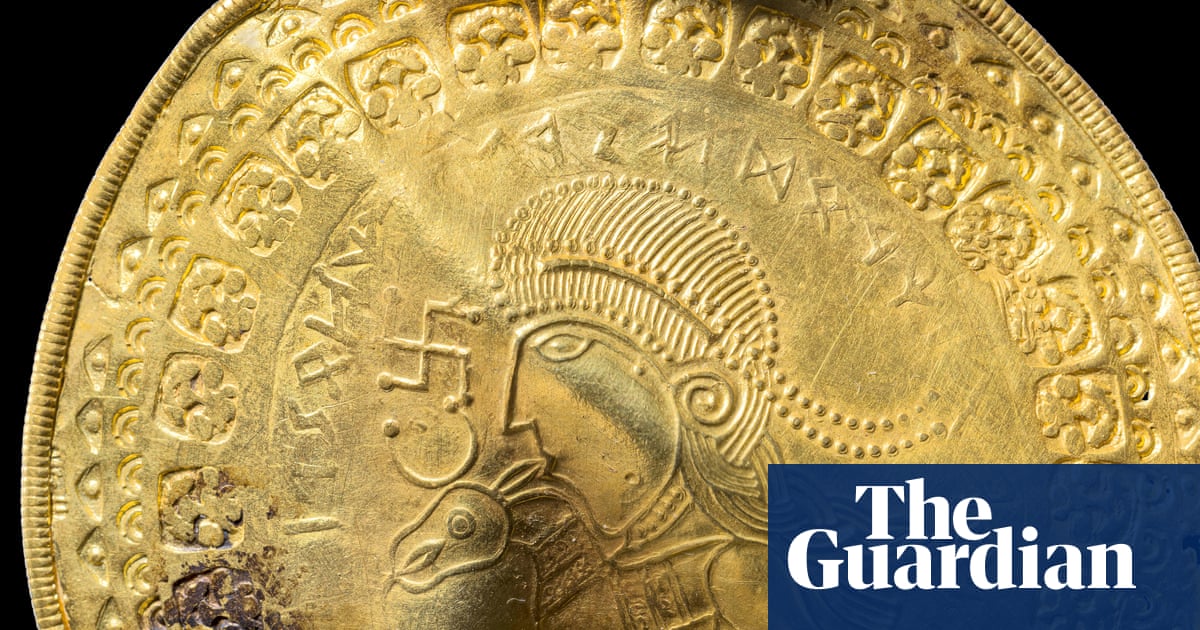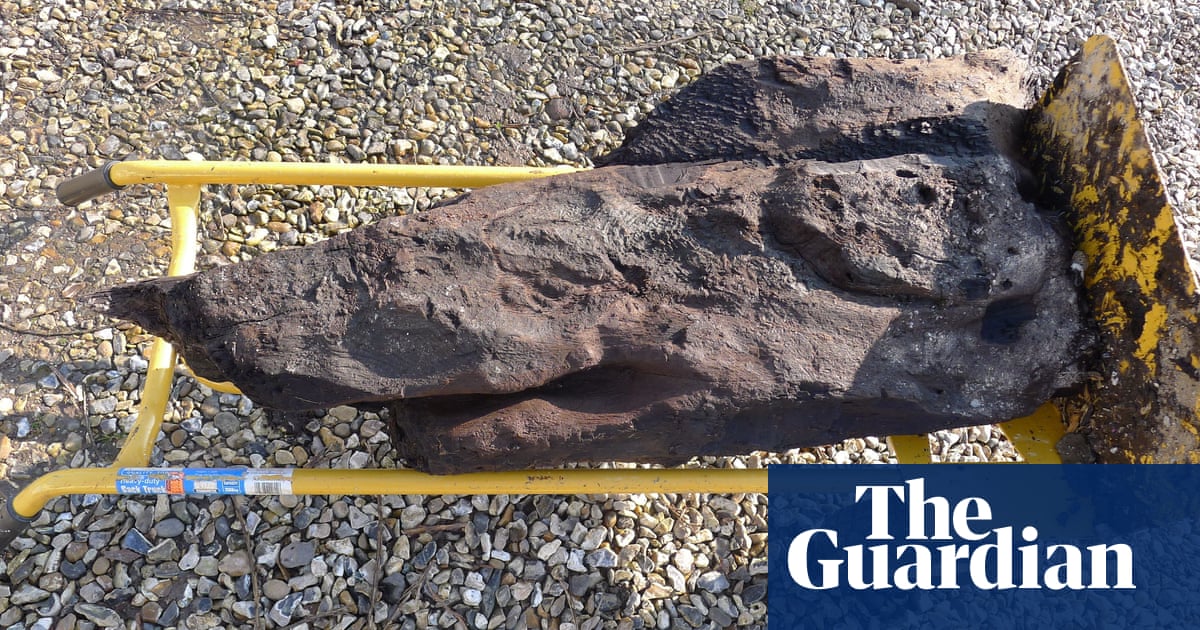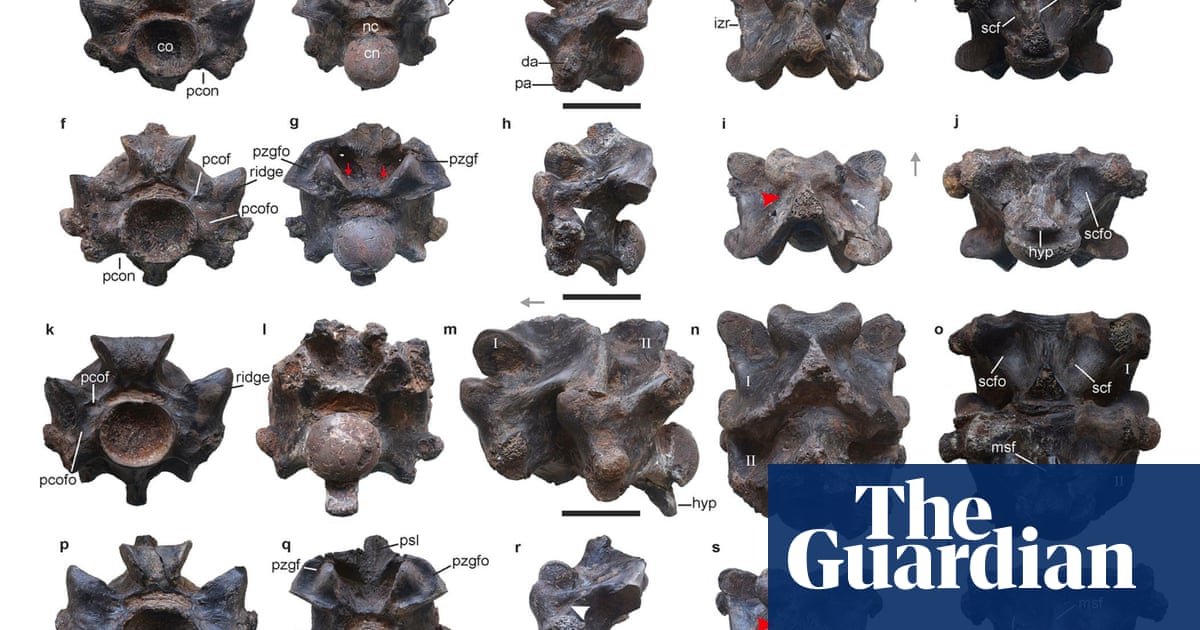
The fossilised remains of a small, sharp-toothed lizard, left in a cupboard for more than half a century, have pushed back the origins of the group that encompasses modern snakes and lizards by tens of millions of years.
The specimen was collected in the 1950s from a quarry near Tortworth in Gloucestershire by the late fossil hunter Pamela L Robinson. But its true identity was not appreciated as the creature was erroneously labelled and stored, until recently when it was found in the Natural History Museum in London.
Now researchers say advances in technology have allowed them to take a second look, revealing that the creature holds a pivotal position in the reptile family tree.
“It’s partly a story of neglected fossils in [a] drawer, and partially a story [that] without the CT scan, you would not have been able to do the work that we did,” said Prof Michael Benton, a palaeontologist at the University of Bristol and a co-author of the research.
The long-tailed creature – about 25cm in length – is thought to have lived around 202m years ago It has been named Cryptovaranoides microlanius. The first term means hidden lizard-like animal, referring to its time spent unrecognised and its likely concealment in rock crevices during its life. The second term, which translates as microbutcher, is a nod to the creature’s recurved, blade-like teeth.
Using CT scanning, Benton and colleagues were able to look at the fossil in fine detail and study the bones trapped within the rock. Benson said the animal’s skull was 3cm in length. “The fossil is tiny, the ribs are just minute,” he said.
The results reveal that the animal was a squamate – one of a scaled reptile group that includes creatures such as lizards and snakes. “They start out as lizards – snakes evolve rather later in the Cretaceous,” Benton said.
The creature has key hallmarks of modern lizards, such as modified bones at the back of the skull to allow extra flexibility in jaw opening, making it the oldest such reptile found so far.
“It’s an anguimorph lizard, which today includes 350 species, including everything from the gila monster of North America to the Komodo monitor, the huge predatory lizard of Indonesia,” said Benton.
The team say the finding pushes back the origins of modern squamates by at least 34m years. The oldest known modern lizard previously was thought to have lived about 168m years ago.
The team add that the discovery has important implications for understanding the rate of evolution within the tree of life, and the timescale and triggers of biodiversity within modern squamates – the latter of which may help conservation of living species.
“Previously, the common ancestor of all those living forms was dated in the Middle Jurassic, whereas we’re now pulling it back to the late Triassic,” said Benton.
He said that while Cryptovaranoides microlanius was the nearest scientists now have to the last common ancestor of modern squamates, its advanced features mean the title probably belongs to another, possibly even older, creature.
Prof Steve Brusatte, a palaeontologist at the University of Edinburgh who was not involved in the work, said that while scientists had made many advances in understanding theorigins of mammals, birds, and crocodiles, the ancestry of lizards and snakes was more of a mystery.
“There are few skeletons of these delicate animals that have been preserved as fossils, and many of them are so fragile that they have proven very hard to study,” he said.
“If its identification as a modern-style lizard is correct, that meant that lizards were beginning to diversify during the Triassic period, alongside some of the earliest dinosaurs and mammal. It also proves that there are amazingly important British fossils still lurking, either in the field waiting to be discovered, or in museum collections waiting to be properly studied.”












